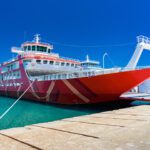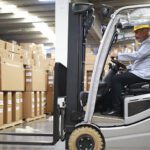Marine Vehicles Embrace Advanced Tech for Diverse Missions
Submersible vehicles travel to the depths of the ocean with highly sophisticated electronics on board to gather and transmit data for exploration and scientific research, environmental protection and monitoring, security and defense, and search and salvage operations.

The world’s oceans and waterways contain vast amounts of information that is more easily gathered and studied today with the aid of specially designed marine vehicles. Human-occupied and autonomous underwater vehicles, surface vehicles, and ships are engaged in a variety of activities, including exploration and scientific research, environmental protection and monitoring, defense and security, and search and salvage operations.
The hidden worlds at the depths of the ocean are now accessible with the help of submersible human-occupied vehicles (HOVs), autonomous underwater vehicles (AUVs), and autonomous surface vehicles (ASVs). With highly sophisticated electronics on board to gather and transmit data as well as for the vehicles’ operation, connectors and cables play a vital role in the missions these vehicles carry out.
Autonomous marine vehicles
The multi-national, multi-trillion-dollar maritime industry is impacted by many challenges: piracy, restricted access due to geopolitical tensions, staffing shortages, climate change, and continuing disruption from the global pandemic. Fuel costs, charter rates, vessel depreciation, maintenance expenses, and regulatory compliance costs keep the industry operating at low profit margins, making cost savings a priority. Increasingly, autonomous marine vehicles (AMVs) are being employed to mitigate these challenges. AMVs are robotic devices that navigate without human intervention.
Navigating Tomorrow’s Waters – The World of Autonomous Marine Vehicles, an eBook published by Harwin, details the recent increase in the use of autonomous technology in this market, largely due to its suitability for conducting hydrographic, oceanographic, and environmental surveys. These vital surveys gather information on marine and freshwater environments to assist with mitigating the industry’s many challenges.
With innovations in AI, sensors, and materials, AMVs contribute to reduced costs and increased profits. Fewer humans on the payroll translates to lower overhead. Sophisticated sensors, imaging systems, AI, and machine learning make these vehicles more effective than humans in carrying out their tasks. They can work continuously, cover large areas for extended periods of time, and operate in hazardous areas.
In oceanography, AMVs measure water temperature, salinity, dissolved oxygen levels, and other parameters for the study of marine ecosystems, climate patterns, and ocean behavior. In search and rescue operations, they can aid in locating missing persons, downed aircraft, or sunken vessels, and assist rescue teams with real-time data. They aid military and defense operations with intelligence gathering and maritime border monitoring (surveillance and reconnaissance) as well as by detecting and neutralizing underwater mines. AUVs are used to inspect bridges, dams, cables, and other underwater infrastructure to assess structural integrity, identify damage or corrosion, and provide information for repairs and maintenance.
Fiber is replacing electrical signals for data
The offshore oil & gas industry is also driving technology use in deep, underwater applications. Underwater marine vehicles can perform subsea inspections and monitor offshore infrastructure for maintenance and safety.
“Subsea oil and gas applications are going deeper and deeper and are driving the use of higher-pressure seals on the systems they’re putting on the ocean floor and the underwater vehicles that tend to that equipment. That is currently driving a transition from a typical optical feedthrough or connector to one with higher technology in terms of sealing ability,” said Garry MacDonald, Seal-Connect global product manager at Greene Tweed.
A submersible HOV that can support a small research crew to a depth of 6,500 meters on dives that last up to 10 hours must contend with the extreme pressure of the water trying to force its way into the vehicle. This is a major concern when outfitting the fiber optic sensing systems that extend from the sensors on the outside of the vehicle through the hull to the data boxes, MacDonald explained. Data and images from the sensing systems and high-definition cameras on the outside of the vehicle are fed to the electronics on the inside.
Fiber is being used in place of electrical signals in underwater applications because it can handle vast amounts of data, and it is becoming more cost effective due to its widespread use in the telecom industry. “The features of sealed fiber optic bulkhead feedthroughs are important because they provide safety, a mechanical pressure barrier between the outside and the inside,” MacDonald said. “We call ours a permanent bulkhead feedthrough. The feedthrough is installed through the body of the submarine with traditional O-ring seals between the submarine and the body of the feedthrough. Greene Tweed’s proprietary fiber optic sealing technology provides a high-pressure seal from the feedthrough body to the glass fibers to allow the fibers to pass from outside the submarine to the inside while preventing flooding or leaking through that hole in the sub.”
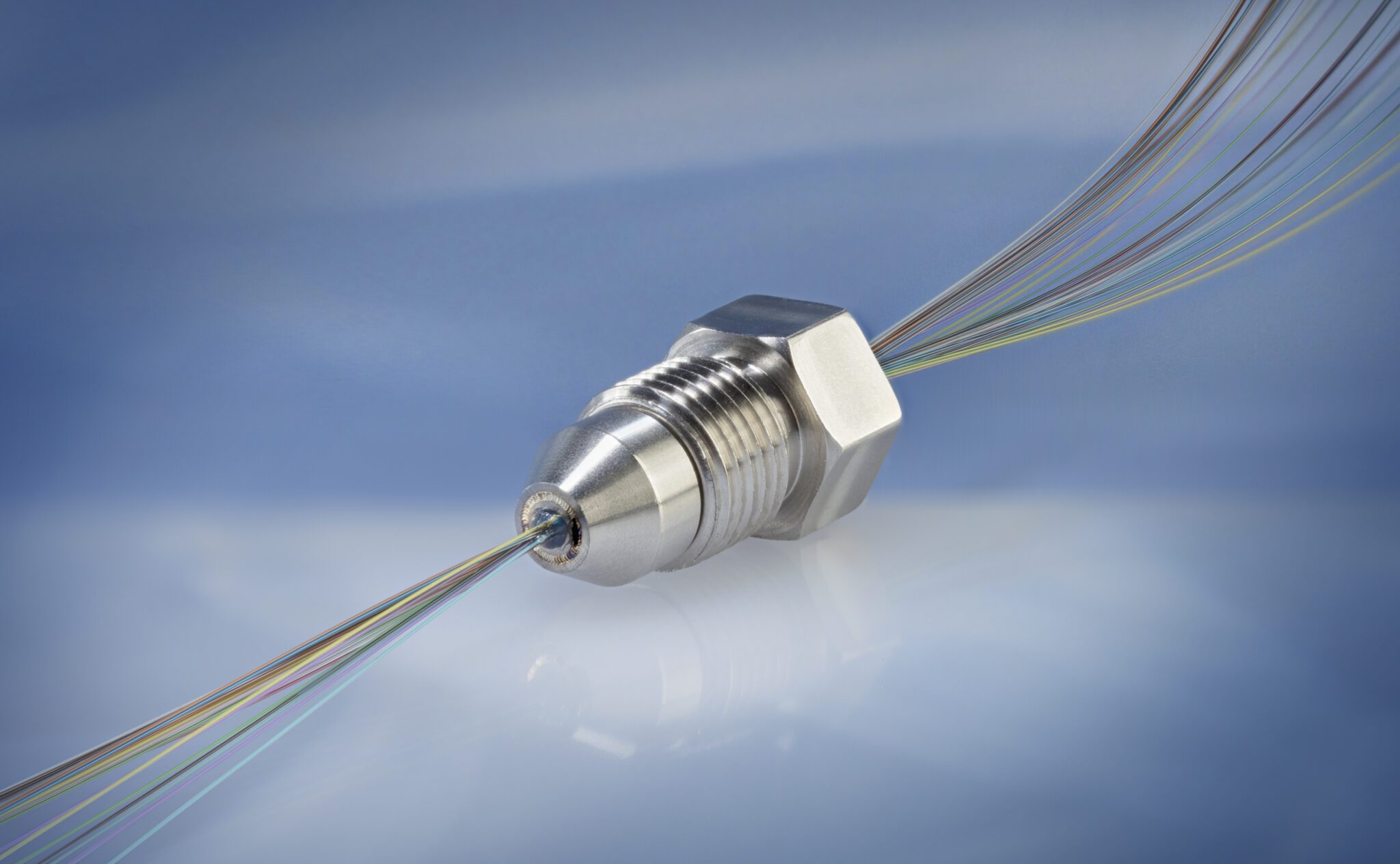
Greene Tweed’s Fiber Optic Extreme product line was developed to ensure data transmission when exposed to extreme pressures and extreme temperatures. It is capable of withstanding operating pressures of 20,000 psi or temperatures up to 302 °F (150 °C).
Several optical sealing technologies are required along the electrical or fiber optic contacts and connectors in the feedthrough, depending on the depth that the vehicle is expected to reach. Optical connections for these applications require lower losses than standard telecom-style, fiber optic connections. “We typically succeed in maximizing signal integrity, achieving less than a half a dB loss — even in a saltwater environment, where there could be significant shock and vibration within the vessel,” said MacDonald.
Design challenges and considerations
Marine vehicles are constantly striving to go deeper, increasing the differential pressure that impacts them. As they continue to push beyond 6,000 meters, the systems and seals will need to be redesigned, said MacDonald.
Because connectors are often an afterthought for designers, one challenge for connector manufacturers is finding solutions that fit and are easy to maintain. Also, as is the case in many markets, designers of marine vehicles seek to pack more and more functionality into the same size connector.
Connectors in marine vehicles must withstand harsh environmental conditions such as exposure to saltwater, temperature fluctuations, and shock and vibration. High quality, robust connectors minimize signal loss and data corruption, which is necessary to ensure stable connectivity for the various sensors, cameras, navigation equipment, and communication devices transmitting signals and data. Modularity and flexibility simplify equipment upgrades, modifications, repairs, and replacement, as well as the integration of additional equipment.
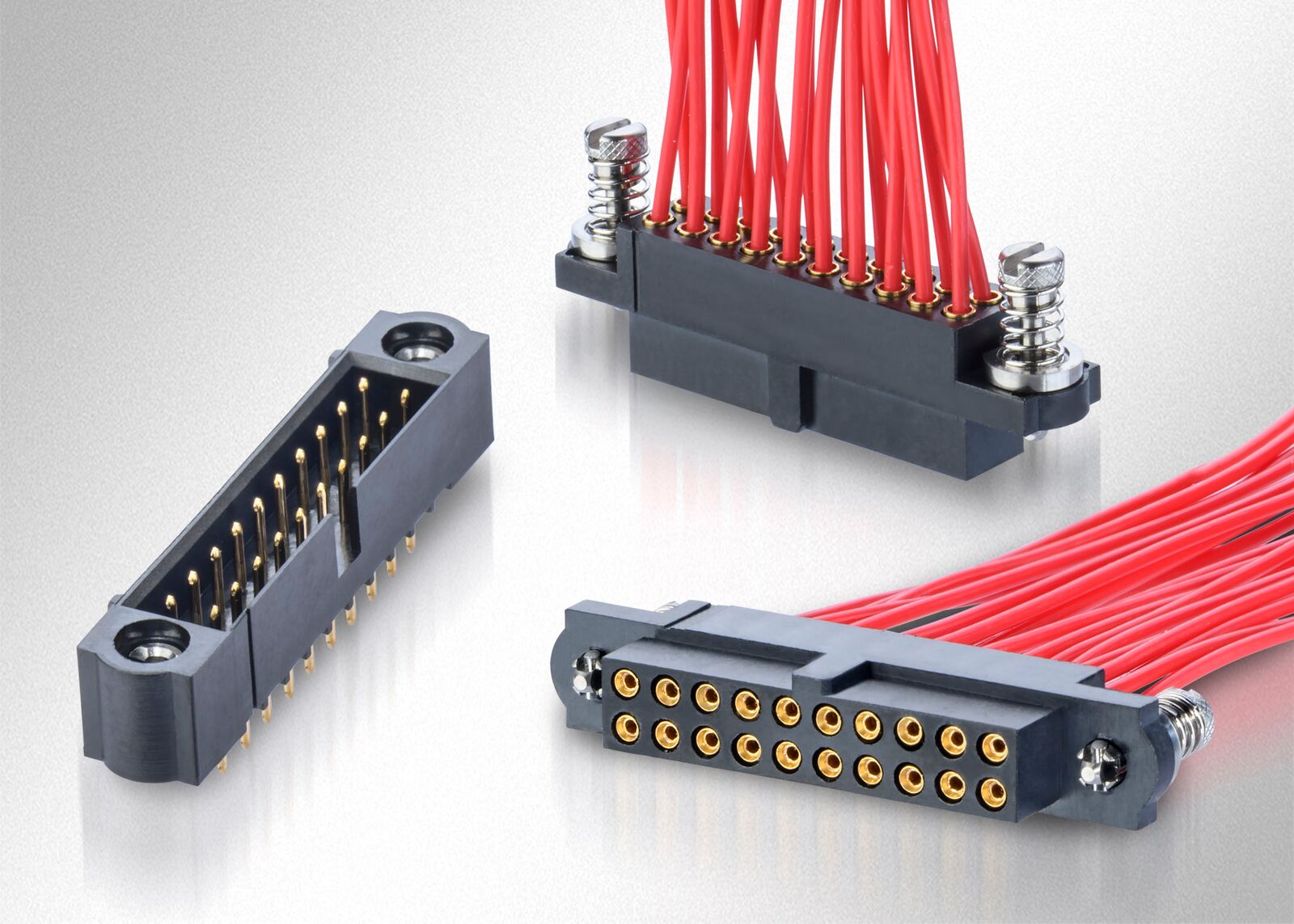
Harwin’s Datamate 101Lok reduces mating/un-mating times when assembling high-rel connectors. Specially designed hardware tensioned by a coil spring reduces the time required to mate the connector halves. Datamate connectors require only a simple ‘quarter turn’ – actually 101 degrees – to ensure complete security of the retention device. The spring tensioning also helps resist vibration in rugged environment applications. Designed to be very easy to use, they require no special tooling.
Shorter assembly time reduces production costs. Connectors that can be assembled quickly and easily without sacrificing retention do well in this application. Misalignment during mating is another concern, particularly with parts that are regularly removed, during maintenance, for example. Mechanical guides built into the panels and the housing can reduce the amount of misalignment that occurs. Guide-pins can assist with the final connection.
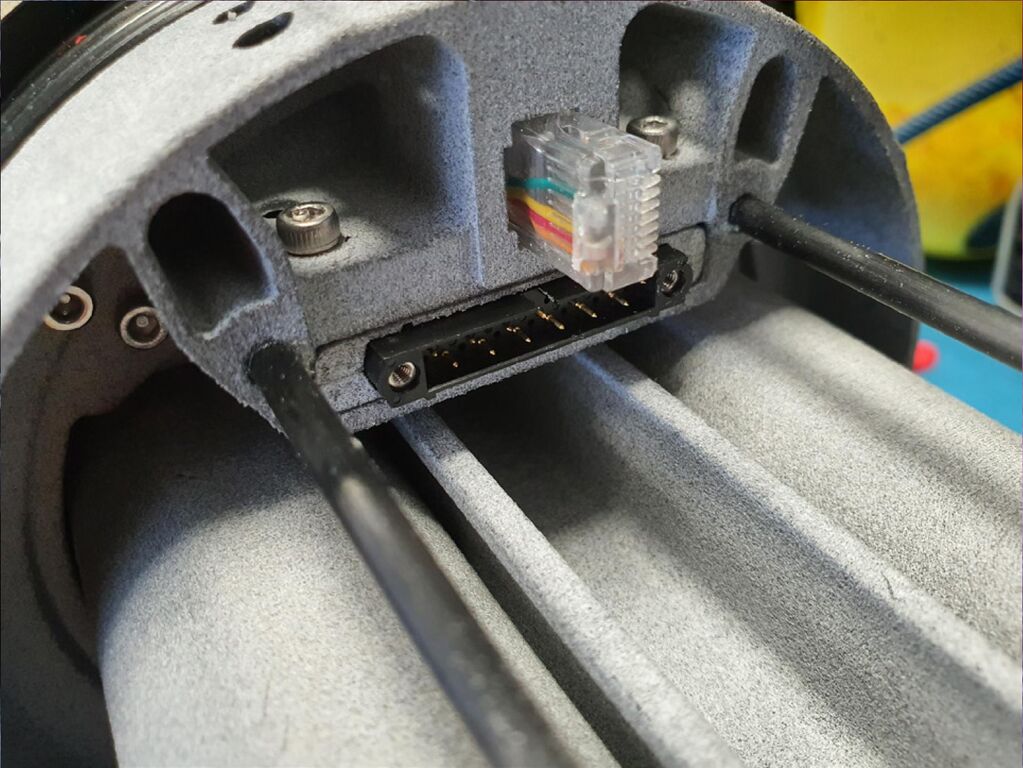
To stop damage to the pins when removing its autonomous submarine’s nose cone, ecoSUB Robotics fitted it with guide-pins to prevent misalignment.
As the interface between the various electrical and electronic components, connectors facilitate connectivity, signal transmission, data exchange, and power distribution. Engineers must consider path planning and control, communication systems, and power and energy management to ensure safety, efficiency, effectiveness, redundancy, reliability, and durability.
To learn more about the companies mentioned in this article, visit the Preferred Supplier pages for Greene Tweed and Harwin.
Like this article? Check out our other Fiber Optics and Autonomous Vehicles articles, our Transportation Market Page, and our 2023 and 2024 Article Archives.
Subscribe to our weekly e-newsletters, follow us on LinkedIn, Twitter, and Facebook, and check out our eBook archives for more applicable, expert-informed connectivity content.
- Sealing Success: Overmolding for More Secure Connections - April 23, 2024
- Medical Cable Assemblies Product Roundup - April 23, 2024
- Mezzanine Connectors Product Roundup - April 16, 2024

